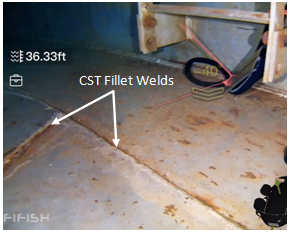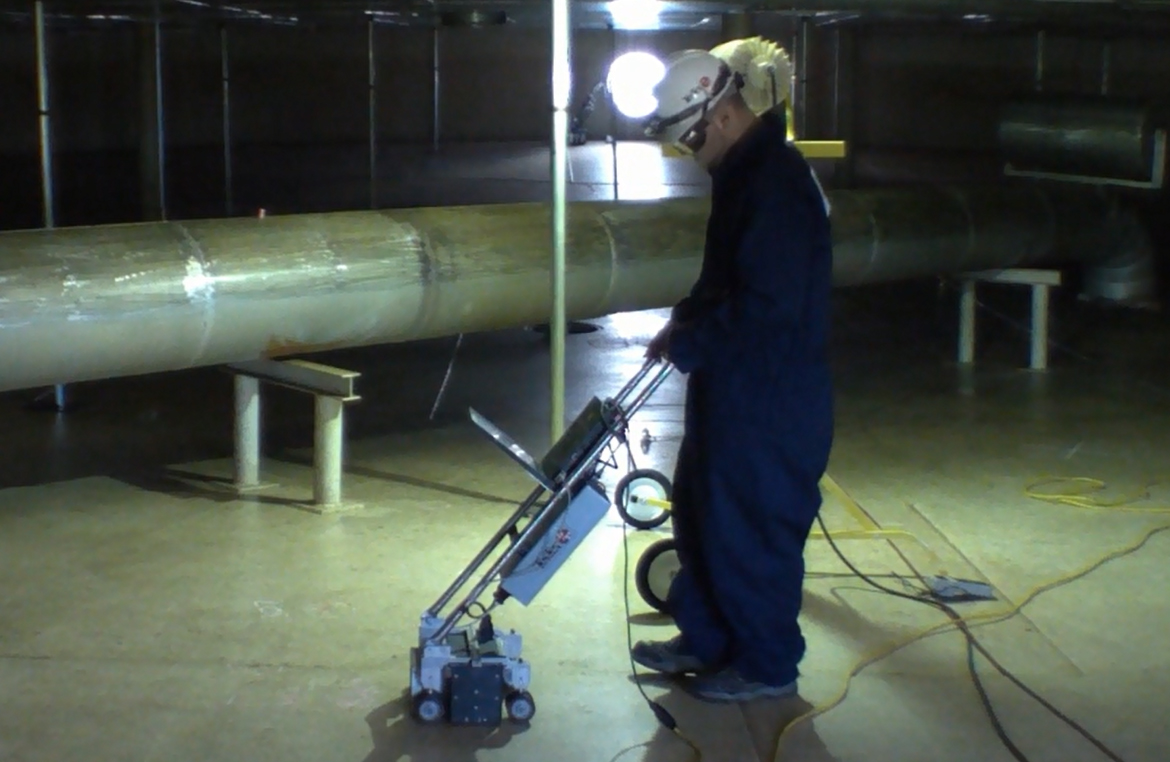The Important Role of Container Welding Assessment in Ensuring Structural Honesty and Security Conformity in Industrial Applications
In the realm of industrial applications, container welding inspection arises as an essential aspect in protecting structural honesty and ensuring compliance with safety and security policies. Utilizing a combination of strategies such as aesthetic assessments and progressed screening techniques, these assessments serve to recognize and mitigate prospective imperfections before they rise right into considerable threats. The implications of these techniques expand beyond mere regulative adherence; they basically impact operational performance and asset long life. Nonetheless, the intricacies bordering the examination procedure prompt a closer assessment of its methodologies and end results, revealing layers of value that quality more expedition.
Significance of Storage Tank Welding Evaluation

Making sure conformity with market standards and policies is another considerable element of tank welding evaluation. Regulatory bodies mandate stringent guidelines for the building and upkeep of storage containers, and comprehensive assessments assist companies stick to these requirements. Non-compliance can cause extreme penalties, including fines and shutdowns, even more stressing the need for strenuous examination protocols.
Furthermore, storage tank welding examination plays an important function in keeping operational efficiency. Normal assessments can determine possible problems prior to they rise, facilitating timely repair services and minimizing downtime. This positive approach not just improves security yet also adds to set you back financial savings in the long run. In recap, the value of container welding inspection depends on its capability to protect public health, protect the atmosphere, and ensure conformity with regulative structures.
Secret Evaluation Strategies
Reliable tank welding examination relies upon a range of essential techniques that make sure comprehensive evaluation of weld top quality and architectural stability. Among the most prevalent methods are aesthetic evaluation, ultrasonic testing, radiographic testing, and magnetic fragment testing - Tank Welding Inspection. Each technique provides unique advantages in examining different aspects of the weld
Visual inspection serves as the initial line of defense, enabling inspectors to identify surface defects, irregularities, or inconsistencies in the weld grain. Ultrasonic screening utilizes high-frequency acoustic waves to detect internal problems, such as fractures or gaps, supplying an extensive evaluation of weld stability. This technique is especially effective in finding issues that may not be noticeable on the surface area.
Radiographic screening makes use of X-rays or gamma rays to generate photos of the welds, revealing internal interruptions and supplying a long-term record for future recommendation. This strategy is highly efficient for important applications where the risk of failure should be reduced.
Finally, magnetic fragment screening is employed to determine surface area and near-surface issues in ferromagnetic materials. By applying magnetic fields and great iron particles, assessors can determine gaps that could jeopardize the structural honesty of the tank. With each other, these strategies form a durable structure for ensuring top notch welds in industrial applications.
Compliance With Safety And Security Requirements

Regular assessments play an essential function in making certain conformity by recognizing possible failures or inconsistencies from recommended criteria. Examiners are trained to assess weld top quality, validate product requirements, and analyze the overall architectural stability of containers. Their expertise is important in guaranteeing that welding processes meet the required safety requirements.
Additionally, compliance with safety and security criteria not only safeguards employees but also safeguards the setting from possible dangers such as leaks or tragic failings. Organizations that prioritize safety compliance are much better placed to reduce threats, enhance functional effectiveness, and foster a culture of security within their workforce. In summary, keeping strenuous conformity with safety standards is essential for the effective operation of storage tank welding tasks in commercial setups.
Advantages of Normal Evaluations
Routine examinations are indispensable to keeping the architectural integrity and security of bonded storage tanks. These inspections give an organized approach to identifying possible defects or weak points in the welds, guaranteeing that any type of issues are attended to prior to they escalate into significant failures. By conducting routine evaluations, organizations can detect rust, exhaustion, and other types of damage that use this link might jeopardize container performance.
Additionally, constant assessments add to compliance with industry policies and criteria. Abiding by these standards not just minimizes legal dangers yet also boosts the organization's online reputation for security and dependability. Regular evaluations cultivate an aggressive safety culture, urging employees to identify and focus on the importance of tools stability.

Case Researches and Real-World Applications
Case research studies and real-world applications illustrate the concrete impact of efficient tank welding examination techniques. One significant instance is a large petrochemical center that dealt with considerable operational interruptions as a result of leaks in tank. Adhering to the implementation of extensive welding examination protocols, including aesthetic and ultrasonic screening, the facility identified crucial imperfections in weld seams that might have brought about tragic failings. This positive approach not only avoided ecological dangers but additionally conserved the firm millions in possible clean-up prices and governing fines.
Similarly, a water treatment plant executed a comprehensive examination program for its storage tank welding procedures - Tank Welding Inspection. By incorporating non-destructive look at this website testing techniques, the plant had the ability to detect very early indicators of deterioration and tiredness in weld joints. This prompt intervention extended the life-span of the containers and guaranteed conformity with safety policies, therefore safeguarding public health and wellness
These study emphasize the relevance of routine and systematic container welding assessments. By prioritizing these practices, industries can minimize dangers, enhance architectural honesty, and ensure compliance with security requirements, eventually causing improved functional performance and decreased obligations.

Final Thought
In conclusion, tank welding examination is an important component of preserving architectural honesty and safety in commercial applications. Using different evaluation methods guarantees early detection of prospective flaws, therefore preventing disastrous failures. Adherence to safety and security criteria better boosts functional dependability and compliance with regulative demands. Inevitably, routine examinations not just safeguard public health and the setting but also add to the long life and effectiveness of important possessions, highlighting the essential role of this technique in industrial procedures.